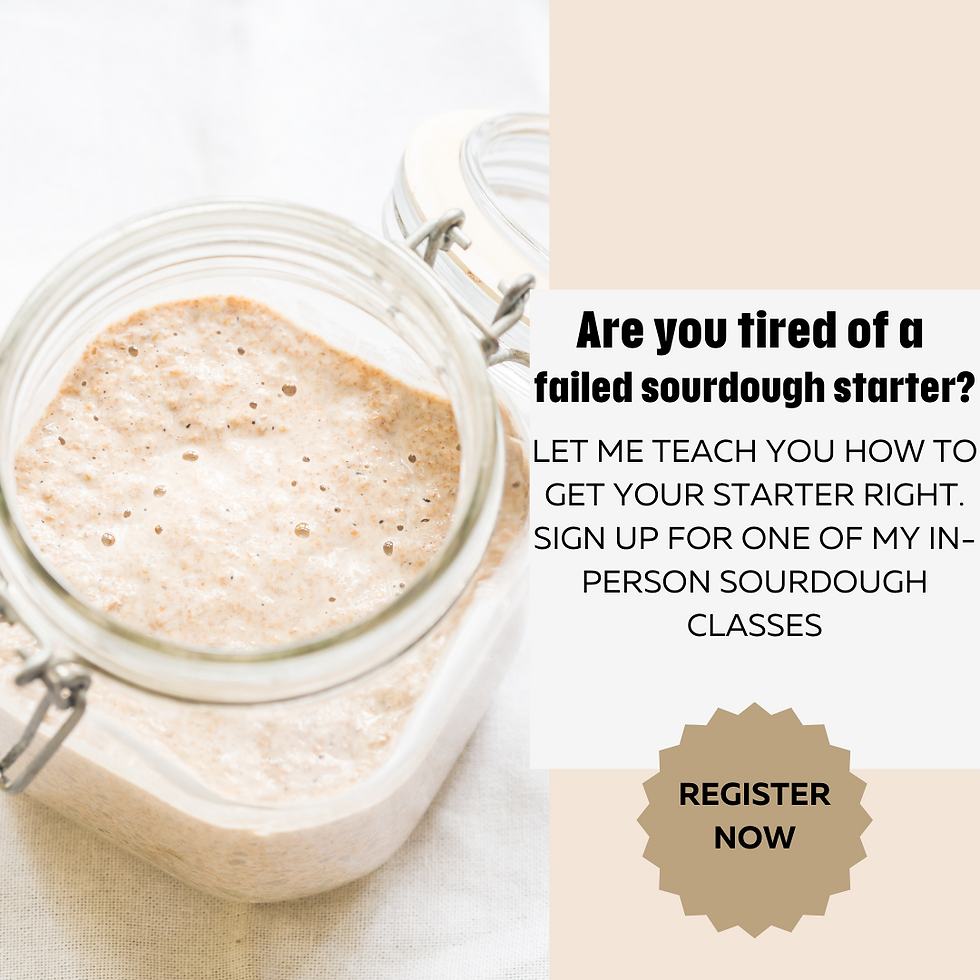
Let's talk about common sourdough starter problems like mold, funky smells, lack of bubbles and strange, unexplainable colors.
What Microbes are in Sourdough Starters?
In order to understand most of these problems, we must first understand what happens in a healthy sourdough starter...
Many types of microbial fermentation happen simultaneously in healthy starters. It is a mixed type of fermentation because starters consist of a rich, wild, mixed culture of yeast and bacteria.
When you culture a sourdough starter, wild yeasts metabolize wheat sugars and carbohydrates into alcohol. At the same time, bacteria consume the sugars, alcohol, and starches in the starter to produce acids.
The bacteria can metabolize carbohydrates from the flour into acids. They can also convert the yeast-produced alcohol into acetaldehyde and acetic acid. The rise and bubbles come from the wild yeast, and the rich sour flavor comes from the bacteria. It truly is magic.
Sourdough Starter Mold
The best, and simplest way to keep your starter from molding is by feeding it at least every 24 hours.
Usually, mold destroys any ferment. However, sourdough starters are the most forgiving of any fermented food. White mold or fungus can grow as a pellicle on the surface of your starter for a few main reasons:
First, mold can grow when you do not discard and feed your starter often enough. Also, if there is a lot of air space in the jar, the top of the starter can dry out and cause growth.
If you experience what looks like mold on your starter, just carefully remove the fungal growth you can. There should be a bit of unscathed sourdough starter underneath.
If there is black, blue, pink or green growth that is fuzzy, you should throw it away and start over. Next time, make sure you feed your starter within 24 hours. If you cannot feed your starter within 24 hours, place it in the fridge for hibernation.
What if my sourdough smells like alcohol?
If you are asking yourself “why does my sourdough starter smell so bad?” The answer depends on the type of smell.
Don’t freak out if you smell strange smells like alcohol or acetone. These sourdough starter smells are quite normal - this took me awhile to get used to.
This smell means that the bacteria in your starter need more oxygen to finish converting yeast. If there isn’t enough oxygen, the bacteria get stuck in the middle of the conversion process, with a build of acetaldehyde (which smells like nail polish). Once you expose them to more oxygen by stirring, discarding, and feeding, they can finish converting acetaldehyde into acetic acid. Again...MAGIC.

My Starter has liquid on top?
If you see liquid on the top of your sourdough starter, do not be alarmed. This is normal and no big deal.
If you find a liquid layer on the top, it could be alcohol produced by yeast, or it could mean your starter is simply too watery -a common problem when using white flour.
Try using thicker flour like whole wheat or rye.
Why is my sourdough starter not bubbling?
Of all the sourdough starter problems, this is the most common. You may be wondering if your sourdough starter is dead simply because it is not bubbling.
Starters can be quite soft and wet. If you are at work all day or sleeping, you may miss it expand and rise. This is normal since it is so hydrated.
If you want your starter to “hold” the rise a little longer, make the starter thicker by using a bit more flour and less water.
How long should it take for my sourdough starter to rise?
Your starter will not rise on your watch. Sorry...it really depends on feed frequency and temperature.
After feeding, a sourdough starter can take anywhere from 5-24 hours to bubble up and rise. Be patient with it; you may need to wait for the bubbly rise, or it might happen while you’re sleeping.
My starter usually takes about 4-5 hours, but I live in south Florida where it's constantly humid and hot!
More Sourdough Starter Tips:

Comments